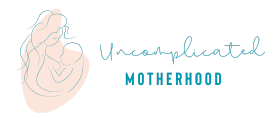Keeping Your Baby Safe: Childproofing Tips for a Secure Home
Creating a safe environment is essential when you have a baby in your home. As your little one begins to explore and become more mobile, it’s crucial to take proactive steps to childproof your home. This article aims to provide you with childproofing tips and strategies to ensure a secure and safe environment for your baby. From securing furniture to safeguarding electrical outlets and protecting against common household hazards, we’ll explore various aspects of childproofing to help you keep your baby safe.
Assessing and Securing the Environment
Before diving into specific childproofing measures, it’s important to assess your home environment with a critical eye. Here are some key areas to consider when securing your home:
- Identify potential hazards: Walk through each room of your home and identify potential hazards from your baby’s perspective. Look for sharp edges, unstable furniture, reachable cords or blinds, low-hanging objects, and anything that could pose a choking or suffocation risk.
- Secure furniture and appliances: Use furniture anchors or wall straps to secure heavy furniture, such as bookshelves, dressers, and TVs, to the wall. Anchor appliances and ensure they are placed securely to prevent tipping. Cover sharp corners and edges with soft, padded protectors to minimize injury risks.
- Install safety gates: Use safety gates to block off areas that are off-limits or potentially hazardous, such as staircases, balconies, or rooms with unsafe objects or equipment. Ensure the gates are properly installed and meet safety standards.
Electrical and Household Safety
Electrical outlets, cords, and common household items can pose risks to your baby’s safety. Here are some measures to protect against electrical and household hazards:
- Outlet covers and cord management: Install outlet covers or use sliding plate covers to prevent access to electrical outlets. Use cord covers or hide cords behind furniture to minimize the risk of strangulation or tripping hazards.
- Secure cords and blinds: Keep cords from blinds or curtains out of your baby’s reach. Use cord shorteners or tie cords up high and out of sight to avoid accidental entanglement.
- Lock cabinets and drawers: Use childproof locks or latches on cabinets and drawers within your baby’s reach. This prevents access to potentially harmful substances, sharp objects, cleaning supplies, or choking hazards.
- Secure appliances and gadgets: Keep small appliances, such as toasters or blenders, unplugged and out of reach when not in use. Secure cords of appliances that are in use to prevent pulling or tipping.
Kitchen and Bathroom Safety
The kitchen and bathroom can harbor various hazards. Implement these safety measures to create secure spaces for your baby:
- Stove and oven safety: Use stove knob covers to prevent your baby from accidentally turning on burners. Install stove guards or create a designated “no-go zone” to keep your baby away from hot surfaces. Use oven door locks or childproof oven knob covers to prevent access.
- Secure hazardous items: Store sharp objects, cleaning supplies, medications, and other potentially harmful items in locked cabinets or high out of your baby’s reach. Be cautious with hot beverages or dishes, ensuring they are placed far from the edge of tables or countertops.
- Toilet safety: Use toilet seat locks or lid locks to prevent access to the toilet bowl, which poses drowning risks. Keep bathroom doors closed or use safety gates to limit access when the bathroom is not in use.
Preventing Falls and Injuries
Falls can be a common occurrence as babies begin to crawl, stand, and explore their surroundings. Here are some measures to prevent falls and injuries in your childproofed home:
- Secure staircases and elevated areas: Install safety gates at the top and bottom of staircases to prevent falls. Consider using hardware-mounted gates for added security. Use window guards or safety netting to prevent falls from elevated windows or balconies.
- Cushioning surfaces: Provide soft and cushioned surfaces in areas where falls are likely, such as near play areas or changing tables. Use padded play mats or rugs to create a safer landing surface.
- Supervise and be vigilant: Keep a close eye on your baby during playtime, particularly in areas with potential fall hazards. Ensure they are supervised when using furniture or toys that can pose a risk of falls or accidents.
Poisoning and Medication Safety
Protecting your baby from poisoning hazards and ensuring medication safety is vital for their well-being. Here are some steps to prevent accidental ingestion and poisoning:
- Store medications safely: Keep all medications, including over-the-counter drugs and supplements, in a locked cabinet or out of your baby’s reach. Dispose of expired or unused medications properly.
- Childproof cabinets and drawers: Use childproof locks or latches on cabinets or drawers that contain cleaning products, chemicals, or other potentially toxic substances. Store these items up high or in a locked cabinet.
- Be cautious with household products: Keep cleaning products, laundry detergents, and other household chemicals in their original, child-resistant packaging. Avoid transferring them to containers that may resemble food or drink.
- Poison control information: Save the poison control helpline number in your phone and keep it easily accessible. In case of accidental ingestion or poisoning, you can quickly seek guidance and assistance.
Conclusion
Childproofing your home is a crucial step in ensuring the safety and well-being of your baby. By assessing and securing the environment, addressing electrical and household hazards, and implementing safety measures in the kitchen and bathroom, you create a secure space for your little one to explore and grow. Remember that childproofing is an ongoing process, and as your baby develops new skills and abilities, reevaluate your safety measures to keep up with their changing needs. With a secure and childproofed home, you can have peace of mind and enjoy precious moments with your baby.
